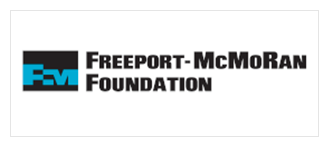Tucson’s labor market has improved since the Great Recession, but it is not back to full health. Employment remains below its pre-recession peak and the unemployment rate is still above pre-recession levels. There are a number of factors driving this, but federal fiscal drag has been a major player, with declining federal government employment and procurement spending. One key measure of labor market performance is the unemployment rate, but it can also be one of the most difficult indicators to explain. Let’s take some time to explore the latest unemployment rate data and trends.
In September 2015, the Tucson MSA posted a non-seasonally-adjusted unemployment rate of 5.7%, which was down from 6.1% a year ago. That was similar to the rates posted by Phoenix (5.5%) and Prescott (5.6%), but below the rates posted by Flagstaff (6.4%), Sierra Vista-Douglas (7.6%), Lake Havasu-Kingman (8.4%), and Yuma (26.0%). Note that Tucson’s unemployment rate was above the national rate of 4.9% but below the state average of 6.4%.
![]()
On average for 2014, Tucson’s unemployment rate was 6.2%, 0.7 percentage points less than the state of Arizona and exactly the same as the nation. Out of the 12 western MSAs, Tucson ranked seventh; Salt Lake City posted the lowest unemployment rate (3.7%) and Las Vegas the highest (7.8%).
![]()
In general, the unemployment rate is a measure of labor market tightness or slack. It tells us how hard employers will have to work to attract and retain employees. Changes in a region’s unemployment rate also tend to be correlated with changes in the poverty rate and thus it affects decisions related to government services and programs such as affordable housing, healthcare, and other forms of public assistance.
It is important to understand how unemployment is measured. The U.S. Census Bureau conducts the Current Population Survey in order to gather information on the individual labor market participation. One product of the survey is an estimate of the unemployment rate, which can be broken down by demographic characteristics of individuals. It is calculated as the proportion of unemployed individuals relative to the total labor force. An unemployed resident is one without a job but who was actively seeking (and available for) work within the past four weeks. The labor force is the sum of employed and unemployed residents. The number of unemployed residents does not include those that are only marginally attached to the labor force, i.e. those who wanted and were available for work, had looked for work during the past year, but did not actively seek employment during the month before being surveyed by the U.S. Census Bureau.
In some situations the unemployment rate may change in counterintuitive ways. For instance, when the economy is getting better, we might expect a decrease in the unemployment rate. However, if discouraged workers return to the labor force by actively seeking work, that can drive up the unemployment rate as the economy improves. Similarly, when the economy is stagnating, residents may drop out of the labor force, by moving out of state, retiring, or giving up on their job search. This will drive down the unemployment rate, even though the economy is not improving.
Let’s switch gears and focus on the statewide labor market. This allows us to explore how unemployment rates vary across demographic groups.
In 2014, Arizona’s unemployment rate was 6.9%, which was the third highest among the 10 western states tracked here. It was also higher than the U.S. rate of 6.2%. Utah led the states with a rate of 3.8%, while Nevada’s rate was the highest at 7.8%.
![]()
While Arizona’s overall unemployment rate was higher than that of the U.S., our rate was slightly lower for the prime working age group (age 25-54). For this age group, Arizona’s unemployment rate was 4.8%, compared to 5.2% for the U.S. Within the 25-54 age group, Arizona’s rate was below the national average for the 25-34 and 35-44 age groups, but above the national average for the 45-54 age group.
![]()
Breaking the data out by race/ethnicity, the unemployment rate for Black or African American residents was 11.3% nationwide, but 5.6% in Arizona. In contrast, the unemployment rates for Whites (6.4%) and Hispanics or Latinos (8.3%) was higher in Arizona than nationally.
![]()
Since 2000, unemployment rates for Tucson, Arizona, and the U.S. have moved in similar directions. Beginning in 2007, the Great Recession drove unemployment rates up significantly, more than doubling the rates for the metropolitan area, the state, and the nation by 2010. However, the recession hit Tucson and Arizona harder than it did the U.S. From 2007 to 2010, unemployment rates in Arizona and Tucson increased by 6.5 and 5.6 percentage points, respectively, while the U.S. rate increased 5.0 percentage points. While Tucson’s unemployment rate has improved significantly, it is down from 9.3% in 2010, it remains well above pre-recession levels.
![]()













